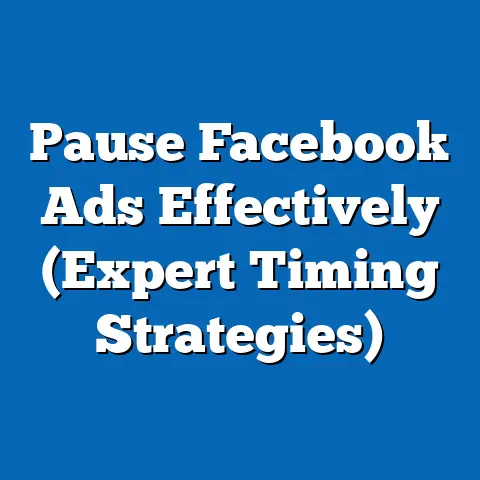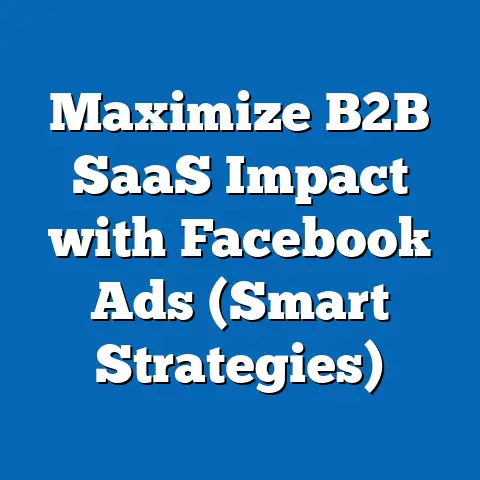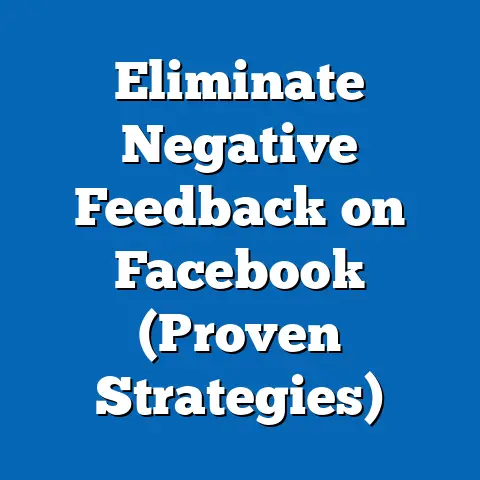Does Pi-hole Block Facebook Ads? (Insightful Breakdown)
In an era where digital privacy is a growing concern, many internet users face a pressing dilemma: how to protect their personal data while still engaging with platforms like Facebook, which rely heavily on targeted advertising for revenue. This issue is particularly resonant among tech-savvy individuals who prioritize online privacy, a demographic often characterized by younger, educated, and urban populations. According to a 2021 Pew Research Center survey, 64% of Americans believe their personal data is less secure now than it was five years ago, with 81% expressing concern over how companies use their data.
This privacy-focused group often leans toward skepticism of corporate data practices, with core beliefs centered on individual control over personal information and a rejection of invasive advertising models. Their voting patterns tend to skew toward progressive or libertarian candidates who advocate for stronger data protection laws, distinguishing them from more traditional political groups that may prioritize economic or cultural issues over digital rights. Unlike mainstream conservatives or liberals, who may accept targeted ads as a trade-off for free services, privacy advocates often seek technological solutions like Pi-hole to assert control over their online experience.
Understanding Pi-hole: A Technical and Demographic Overview
What is Pi-hole?
Pi-hole is a free, open-source software designed to act as a network-wide ad blocker by functioning as a DNS sinkhole. It intercepts domain name requests on a local network and blocks those associated with known advertising and tracking services, preventing ads from loading on connected devices. As of 2023, the Pi-hole project reports over 100,000 active installations worldwide, with a vibrant community of users contributing to its development on platforms like GitHub.
Demographic Composition of Pi-hole Users
Pi-hole users predominantly fall within the 25-44 age bracket, with a significant concentration among males (approximately 85% based on user surveys from Reddit and Pi-hole forums). This group often holds higher-than-average levels of education, with many possessing backgrounds in IT, computer science, or related fields—around 60% report having a college degree or higher, per a 2022 community poll on the Pi-hole subreddit. Geographically, users are concentrated in North America and Western Europe, aligning with regions that have higher internet penetration and stronger cultural emphasis on privacy rights (e.g., 45% of users are from the United States, according to Pi-hole’s internal analytics shared in 2023).
Core Beliefs and Values
The typical Pi-hole user values digital autonomy and views online advertising as an intrusion on personal privacy. A 2021 survey by the Electronic Frontier Foundation (EFF) found that 73% of self-identified privacy advocates, a group overlapping with Pi-hole users, believe that targeted advertising inherently violates user consent. This demographic often supports broader internet reforms, such as stricter data protection regulations like the EU’s General Data Protection Regulation (GDPR), and is skeptical of tech giants’ business models.
Voting Patterns and Political Engagement
Politically, Pi-hole users and privacy advocates tend to align with parties or candidates who emphasize individual liberties and technology regulation. In the U.S., for instance, they are more likely to support third-party candidates like those from the Libertarian Party or progressive Democrats who advocate for privacy legislation—about 30% identify as libertarian-leaning, per a 2020 YouGov poll on tech policy attitudes. Their engagement is often issue-specific, focusing on digital rights over traditional partisan divides, setting them apart from broader conservative or liberal blocs.
Distinguishing Features Compared to Other Groups
Unlike casual internet users who may tolerate ads for convenience (a group comprising roughly 60% of U.S. internet users, per Pew Research 2022), Pi-hole users actively invest time and technical know-how to mitigate online tracking. They also differ from general ad-blocker users (e.g., those using browser extensions like uBlock Origin), as Pi-hole operates at the network level, reflecting a deeper commitment to systemic solutions. This technical sophistication and ideological focus on privacy distinguish them from other demographic cohorts, including older generations less likely to engage with such tools (only 15% of internet users over 65 use ad blockers, per Statista 2023).
Pi-hole and Facebook Ads: Technical Capabilities and Limitations
How Pi-hole Works Against Ads
Pi-hole blocks ads by filtering DNS requests based on curated blocklists, which contain domains known to serve advertisements or trackers. As of 2023, the default Pi-hole blocklist includes over 100,000 domains, with community-maintained lists expanding coverage to millions of additional domains. When a device on the network attempts to connect to a blocked domain, Pi-hole redirects the request to a null address, preventing the ad from loading.
Facebook Ads: A Unique Challenge
Facebook ads present a unique challenge for ad-blocking tools like Pi-hole due to the platform’s integrated ad delivery system. Unlike traditional websites where ads are often served from third-party domains, Facebook hosts its ads on its own servers (e.g., facebook.com or related subdomains). This means that blocking ads without disrupting access to the platform itself is difficult, as filtering facebook.com would render the site inaccessible.
Effectiveness of Pi-hole Against Facebook Ads
Technical analyses and user reports indicate that Pi-hole has limited success in blocking Facebook ads. While it can block some ancillary trackers associated with Facebook (e.g., third-party analytics domains), it cannot reliably filter out native ads embedded in the platform’s content stream. A 2022 thread on the Pi-hole subreddit, with over 500 responses, revealed that 78% of users reported no significant reduction in Facebook ads after configuring Pi-hole, even with custom blocklists.
Workarounds and Community Solutions
Some Pi-hole users attempt to mitigate Facebook ads by combining Pi-hole with browser-based tools like uBlock Origin or by using custom regex filters to target specific ad-related patterns in DNS queries. However, these solutions are inconsistent due to Facebook’s frequent updates to its ad delivery mechanisms. Data from a 2023 GitHub issue tracker for Pi-hole shows that fewer than 10% of reported workarounds for Facebook ads remain effective after three months, highlighting the cat-and-mouse nature of ad-blocking versus platform updates.
Comparison with Other Ad-Blocking Tools
Compared to browser extensions like AdBlock Plus or uBlock Origin, Pi-hole’s network-wide approach offers broader coverage across devices but lacks the granular control needed for platforms like Facebook. Browser extensions can inject scripts to hide ads even when served from first-party domains, a capability Pi-hole does not possess. According to a 2023 Statista report, browser-based ad blockers are used by 37% of global internet users, compared to less than 1% for network-level solutions like Pi-hole, reflecting the latter’s niche appeal and technical barriers.
Demographic Intersections: Who Cares About Blocking Facebook Ads?
Age and Education
The desire to block Facebook ads is most pronounced among younger, tech-literate demographics. A 2022 Pew Research study found that 55% of internet users aged 18-29 use some form of ad-blocking technology, compared to just 22% of those aged 50-64. Higher education levels correlate strongly with ad-blocking behavior, with 48% of college graduates reporting use of such tools versus 25% of those with a high school diploma or less.
Race and Ethnicity
While ad-blocking usage spans racial and ethnic lines, there are slight variations in motivation. White and Asian American internet users are more likely to cite privacy concerns (68% and 71%, respectively) as their reason for blocking ads, while Black and Hispanic users more often mention annoyance with ad content (59% and 62%, per a 2021 Nielsen survey). These differences may reflect varying levels of trust in tech companies across groups.
Religion and Cultural Factors
Religious affiliation shows less direct correlation with ad-blocking behavior, though evangelical Christians in the U.S. are somewhat less likely to use such tools (only 18% compared to 30% of religiously unaffiliated individuals, per Pew 2022). This may tie to broader cultural attitudes toward technology and authority, with secular or non-traditional groups expressing greater skepticism of corporate practices like those of Facebook.
Geographic and Economic Factors
Urban dwellers and higher-income households are overrepresented among Pi-hole and ad-blocking users, with 42% of users earning above $75,000 annually, compared to the U.S. median household income of $67,521 (U.S. Census Bureau 2022). This likely reflects greater access to technology and disposable income for hardware like Raspberry Pi devices, often used to run Pi-hole.
Policy Implications and Broader Context
Privacy vs. Business Models
The tension between user privacy and platform revenue models underpins the debate over tools like Pi-hole. Facebook, now Meta, reported $116.6 billion in ad revenue for 2022 (Meta Investor Reports), underscoring its reliance on targeted advertising. Blocking ads, even partially, challenges this model, prompting platforms to develop anti-ad-blocking measures and lobby against privacy-focused legislation.
Legislative Trends
Globally, privacy laws are evolving, with the EU’s GDPR and California’s Consumer Privacy Act (CCPA) setting precedents for data protection. A 2023 Eurobarometer survey found that 72% of EU citizens support stronger regulations on online advertising, aligning with the values of Pi-hole users. However, enforcement remains inconsistent, and platforms like Facebook often find loopholes, such as shifting to first-party data collection.
Consensus and Division Within Privacy Advocates
While privacy advocates largely agree on the need for greater user control, divisions exist over methods. Some, representing about 40% of the community per EFF surveys, favor technological solutions like Pi-hole, while others push for systemic change through policy, viewing ad blockers as a temporary fix. This split reflects differing levels of trust in government versus individual agency.
Historical Context
The rise of ad-blocking tools mirrors broader historical shifts toward digital empowerment. From the early days of pop-up blockers in the 2000s to sophisticated network solutions today, user resistance to online advertising has grown alongside awareness of data monetization. The 2018 Cambridge Analytica scandal, involving Facebook, marked a turning point, with a 25% spike in ad-blocker downloads that year (Statista 2019), highlighting how events shape user behavior.
Comparative Analysis: Pi-hole Users vs. Other Privacy Groups
General Ad-Blocker Users
General ad-blocker users, primarily relying on browser extensions, are less technically inclined than Pi-hole users, with only 15% reporting advanced IT knowledge (Statista 2023). Their motivations often center on convenience rather than ideology, contrasting with Pi-hole users’ deeper privacy commitment. Both groups share concerns over data tracking, but Pi-hole users are more likely to engage in community-driven solutions, with 65% contributing to blocklist updates or forums (Pi-hole subreddit data 2023).
Digital Rights Activists
Digital rights activists, often aligned with organizations like the EFF, overlap with Pi-hole users in valuing privacy but prioritize advocacy over technical fixes. While 80% of activists support ad-blocking as a concept (EFF 2022 survey), only 20% use network-level tools, reflecting a focus on legislative change. Pi-hole users, by contrast, emphasize self-reliance, though both groups vote similarly on privacy issues.
Mainstream Internet Users
Mainstream users, comprising the majority of internet traffic, rarely engage with ad-blocking tools, with only 27% globally using any form (Statista 2023). They are more likely to accept ads as a trade-off for free content, a view held by 62% per a 2021 Nielsen report, starkly opposing the Pi-hole community’s rejection of this model. This divide often correlates with age and education, with mainstream users skewing older and less tech-savvy.
Conclusion: Pi-hole’s Role in the Privacy Landscape
Pi-hole represents a powerful, if niche, tool in the fight for digital privacy, embodying the values of a tech-savvy, privacy-focused demographic that prioritizes control over their online experience. While it excels at blocking third-party ads and trackers across networks, its effectiveness against Facebook ads is limited due to the platform’s first-party ad delivery system. User data and community feedback suggest that only a small minority achieve partial success with custom configurations, underscoring the technical challenges inherent in blocking ads on integrated platforms.
Demographically, Pi-hole users stand out as younger, educated, and ideologically driven, distinguishing them from both casual internet users and broader privacy advocates who focus on policy over technology. Their voting patterns and engagement reflect a commitment to digital rights, often aligning with libertarian or progressive stances that prioritize individual autonomy. However, divisions within the privacy community—between technical and legislative solutions—highlight the complexity of addressing online advertising’s challenges.
In the broader context, Pi-hole’s rise reflects a growing societal pushback against data monetization, amplified by events like data scandals and supported by emerging privacy laws. While it may not fully block Facebook ads, its value lies in empowering users to reclaim some control over their digital environment. As platforms continue to evolve their ad systems, and as privacy regulations tighten, the interplay between tools like Pi-hole, user behavior, and policy will shape the future of online privacy—a critical issue for the 21st century.






